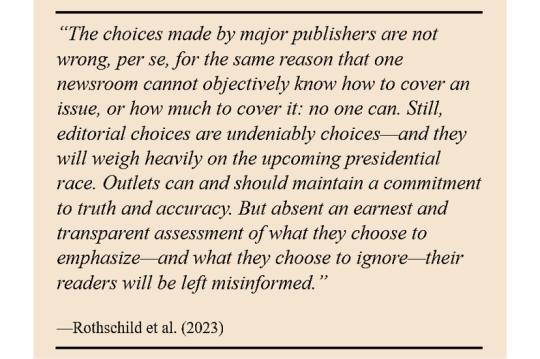#review new york times
Text
‘Cabaret’ Review: What Good Is Screaming Alone in Your Room?
Eddie Redmayne and Gayle Rankin star in a buzzy Broadway revival that rips the skin off the 1966 musical.

Eddie Redmayne, center, as the Emcee in Rebecca Frecknall’s revival of “Cabaret” at the August Wilson Theater in Manhattan.Credit...Sara Krulwich/The New York Time
By Jesse Green April 21, 2024
Just east of its marquee, the August Wilson Theater abuts an alley you probably didn’t notice when last you were there, perhaps to see “Funny Girl,” its previous tenant. Why would you? Where the trash goes is not usually part of the Broadway experience.
But it is for the latest revival of “Cabaret,” which opened at the Wilson on Sunday. Audience members are herded into that alley, past the garbage, down some halls, up some stairs and through a fringed curtain to a dimly lit lounge. (There’s a separate entrance for those with mobility issues.) Along the way, greeters offer free shots of cherry schnapps that taste, I’m reliably told, like cough syrup cut with paint thinner.
Too often I thought the same of the show itself.
But the show comes later. First, starting 75 minutes beforehand, you can experience the ambience of the various bars that constitute the so-called Kit Kat Club, branded in honor of the fictional Berlin cabaret where much of the musical takes place. Also meant to get you in the mood for a story set mostly in 1930, on the edge of economic and spiritual disaster, are some moody George Grosz-like paintings commissioned from Jonathan Lyndon Chase. (One is called “Dancing, Holiday Before Doom.”) The $9 thimbleful of potato chips is presumably a nod to the period’s hyperinflation.
This all seemed like throat clearing to me, as did the complete reconfiguration of the auditorium itself, which is now arranged like a large supper club or a small stadium. (The scenic, costume and theater design are the jaw-dropping work of Tom Scutt.) The only relevant purpose I can see for this conceptual doodling, however well carried out, is to give the fifth Broadway incarnation of the 1966 show a distinctive profile. It certainly does that.
The problem for me is that “Cabaret” has a distinctive profile already. The extreme one offered here frequently defaces it.
Let me quickly add that Rebecca Frecknall’s production, first seen in London, has many fine and entertaining moments. Some feature its West End star Eddie Redmayne, as the macabre emcee of the Kit Kat Club (and quite likely your nightmares). Some come from its new New York cast, including Gayle Rankin (as the decadent would-be chanteuse Sally Bowles) and Bebe Neuwirth and Steven Skybell (dignified and wrenching as an older couple). Others arise from Frecknall’s staging itself, which is spectacular when in additive mode, illuminating the classic score by John Kander and Fred Ebb, and the amazingly sturdy book by Joe Masteroff.

In this production, Gayle Rankin’s Sally Bowles is meant to be taken medicinally and poisonously, projecting instead of concealing her character’s turmoil, our critic writes.Credit...Sara Krulwich/The New York Times
But too often a misguided attempt to resuscitate the show breaks its ribs.
The conception of Sally is especially alarming. As written — and as introduced in the play and stories the musical is based on — she is a creature of blithe insouciance if not talent, an English good-time gal flitting from brute to brute in Berlin while hoping to become a star. Her first number, “Don’t Tell Mama,” is a lively Charleston with winking lyrics (“You can tell my brother, that ain’t grim/Cause if he squeals on me I’ll squeal on him”) that make the Kit Kat Club audience, and the Broadway one too, complicit in her naughtiness.
Instead, Frecknall gives us a Sally made up to look like she’s recently been assaulted or released from an asylum, who dances like a wounded bird, stretches each syllable to the breaking point and shrieks the song instead of singing it. (Goodbye, Charleston; hello, dirge.) If Rankin doesn’t sound good in the number, nor later in “Mein Herr,” interpolated from the 1972 film, she’s not trying to. Like the cough syrup-paint thinner concoction, she’s meant to be taken medicinally and poisonously in this production, projecting instead of concealing Sally’s turmoil.
That’s inside-out. The point of Sally, and of “Cabaret” more generally, is to dramatize the danger of disengagement from reality, not to fetishize it.
The guts-first problem also distorts Redmayne’s Emcee, but at least that character was always intended as allegorical. He is the host to anything, the amoral shape-shifter, becoming whatever he must to get by. Here, he begins as a kind of marionette in a leather skirt and tiny party hat, hiccupping his way through “Willkommen.” Later he effectively incarnates himself as a creepy clown, an undead skeleton, Sally’s twin and a glossy Nazi.
Having seen Frecknall’s riveting production of “Sanctuary City,” a play about undocumented immigrants by Martyna Majok, I’m not surprised that her “Cabaret” finds a surer footing in the “book” scenes. These are the ones that take place in the real Berlin, not the metaphorical one of the Kit Kat Club. She is extraordinarily good when she starts with the naturalistic surface of behavior, letting the mise en scène and the lighting (excellent, by Isabella Byrd) suggest the rest.
And naturalism is what you find at the boardinghouse run by Fräulein Schneider (Neuwirth), a woman who has learned to keep her nose down to keep safe. Her tenants include a Jewish fruiterer, Herr Schultz (Skybell); a prostitute, Fräulein Kost (Natascia Diaz); and Clifford Bradshaw (Ato Blankson-Wood), an American writer come to Berlin in search of inspiration. Soon Sally shows up to provide it, having talked her way into Cliff’s life and bed despite being little more than a stranger. Also, despite Cliff’s romantic ambivalence; over the years, the character has had his sexuality revamped more times than a clownfish.
The Schneider-Shultz romance is sweet and sad; neither character is called upon to shriek. And Rankin excels in Sally’s scenes with Cliff, her wry, frank and hopeful personality back in place. The songs that emerge from the boardinghouse dramas are not ransacked as psychiatric case studies but are rather given room to let comment proceed naturally from real entertainment. Rankin’s “Maybe This Time,” with no slathered-on histrionics, is riveting. It turns out she can properly sing.

The interface between the naturalism and the expressionism does make for some weird moments: Herr Schultz, courtly in a topcoat, must hug Sally goodbye in her bra. But letting the styles mix also brings out the production’s most haunting imagery. The intrusion of the Nazi threat into the story is especially well handled: first a gorgeously sung and thus chilling version of “Tomorrow Belongs to Me,” then the swastika and then — well, I don’t want to give away how Frecknall stages the scene in which Schultz’s fruit shop is vandalized.
That so many of these moments arise from faithful attention to the original material should be no surprise. “Cabaret” hasn’t lasted this long for nothing. Created at the tail end of Broadway’s Golden Age, it benefited from the tradition of meticulous craftsmanship that preceded it while anticipating the era of conceptual stagings that followed.
All this is baked into the book, and especially the score, which I trust I admire not merely because I worked on a Kander and Ebb show 40 years ago. That the lyrics rhyme perfectly is a given with Ebb; more important, they are always the right words to rhyme. (Listen, in the title song, for the widely spaced triplet of “room,” “broom” and, uh-oh, “tomb.”) And Kander’s music, remixing period jazz, Kurt Weill and Broadway exuberance, never oversteps the milieu or outpaces the characters even as it pushes them toward their full and sometimes manic expression.
When this new “Cabaret” follows that template, it achieves more than the buzz of chic architecture and louche dancing. (The choreography is by Julia Cheng.) Seducing us and then repelling us — in that order — it dramatizes why we flock to such things in the first place, whether at the Kit Kat Club or the August Wilson Theater. We hope, at our risk, to forget that, outside, “life is disappointing,” as the Emcee tells us. We want to unsee the trash.
Cabaret
At the August Wilson Theater, Manhattan; kitkat.club. Running time: 2 hours 45 minutes, with an optional preshow.
Jesse Green is the chief theater critic for The Times. He writes reviews of Broadway, Off Broadway, Off Off Broadway, regional and sometimes international productions. More about Jesse Green
https://www.nytimes.com/2024/04/21/theater/cabaret-review-eddie-redmayne.html
#eddie redmayne#cabaret#cabaret nyc#review new york times#broadway#eddie redmayne cabaret#cabaret nwe production#august wilson#theatre#cabaret 2024#musical#cabaret musical
10 notes
·
View notes
Text




According to the New York Times, these are the best fiction books of the 2020s. Do you agree? What's missing?
539 notes
·
View notes
Note
Hello GT, I absolutely love Lionheart!
I published my first fic and have been dealing with some criticism; it’s not anythjng super hateful, but it’s not anything meant to make me improve either. I’ve been feeling sort of down because of it. My question is: have you ever dealt with hate or criticism before? What is your attitude towards it?
I find your work and answers on here super insightful and inspiring! I hope you have a nice day ❤️
Fuck em. Like, seriously, just fuck em. There's a time and place for writers to take critique and be strict with themselves; it's necessary for any artist to grow. That place is with a chosen group of creatives whose work you admire and whose judgment you trust. A rando on the Internet, while they may in fact be the next Marcel Proust, probably isn't. And I was raised to believe that while it's appropriate and kind to pay compliments to strangers when they're performing — just as you'd smile at a busker on the sidewalk, and or compliment a chalk artist — it's not appropriate to criticize them when what they do isn't to your tastes. They're providing you with their art for free. No one forced you to read it; no one forced you to listen. If you don't like it, it costs $0 to shut the fuck up.
Also — that thing I said about artists taking critique? That assumes that you're doing this out of a desire to improve your writing, which, while noble, is not actually a thing you need to do if you're a hobby writer. I like trying to improve; it makes me feel good. But at the end of the day, I do this for fun. I do this because in my real job, I am ruthless and self-critical and try really fucking hard to do well, and you need parts of your life that Aren't Like that. You need parts of your life where you're not worrying about whether you're Doing It Right. And living without that anxiety of critique is, paradoxically, the only way you'll find the artistic courage to take risks and develop new skills. Everyone is a little bit rough around the edges to begin with. (Not saying you're a beginner — you merely said "publish," and I certainly wrote a lot of things before I started publishing! But every artist is always trying to develop new skills and techniques; in the grand scope of things, we're all beginners.) Giving someone blunt critique when they're in the beginning phases of their journey as an artist is about as helpful as screaming at your six-year-old kid because he can't swim the butterfly.
And the thing is, these people will bluster and say "well, I'm just being honest, I'm just trying to be helpful," but like: mmmmmmno, you're not! You're not. And it's disingenuous to say so. Because if you were actually trying to be helpful, you would introduce yourself, offer your skills as an editor/beta reader, and start building the relationship of trust that grounds any meaningful co-creative partnership. People do not just accept random critique that comes flying at them from the blue nowhere. And issuing it in that form is the best way to make them hostile, defensive, and unreceptive to it. Delivering harsh feedback without a context of care and support is almost sure to fail as a method of actually changing behavior, and either (1) you know that, and are doing it anyway — presumably because you want people to know how Terribly Clever and Better At Writing you are, or (2) you sincerely have never thought about the effect that context and word choice have on how other people receive your meaning.
Which tells me you are the last fucking person on the planet I want writing advice from.
#basically: fuck them and fuck anyone who doesn't come to you with kindness when they're offering critique#i don't care if they're a nobel prizewinner. no one is above offering kindness#and if someone thinks they're above giving kindness then you should view them with derision and pity#imagine being so sad you spend your free time shitting on other people's art.#like you're not a critic. you're not the new york times book review buddy.#you read something that someone put their whole heart and joy and free time into#and then held out in their hands eagerly to share with you. because they thought you might like it.#and you sneered at them.#Anon I think you should keep writing forever. I think that the merest sentence you have ever written#is worth more than anything that the authors of your criticism could conceive#and it's you. it's you! if it brings you joy then it's fulfilled its purpose#people mean more than art. you mean more than art. your satisfaction is the object of making it#and finally THANK YOU so much for your very kind words.#they mean a tremendous amount and i am grateful for them.
25 notes
·
View notes
Text

Official Stick Reviews | Lindsay D'Addato | New York Times
44 notes
·
View notes
Text
Brandon Sanderson has finally become so popular that it’s cool for edgelords to hate him
#the amount of people I’ve seen saying that his books are awful recently#it’s fine to not like Brandedson!#don’t get me wrong#but a good portion of the criticism I see are giving the same vibe as the people who hated Harry Potter just because it was popular#people who think they’re reviewing him for the New York Times instead of leaving an Instagram comment lol#brandon sanderson#cosmere
66 notes
·
View notes
Link
This is an important rebuttal to the recent serious misinterpretation of data from a Cochrane review of mask use. This is a gift link, so anyone who wants to read the entire article can do so, even if they do not subscribe to The New York Times. Here is a summary of some of the problems with the studies in the review and with their interpretation:
While the review assessed 78 studies, only 10 of those focused on what happens when people wear masks versus when they don’t, and a further five looked at how effective different types of masks were at blocking transmission, usually for health care workers. The remainder involved other measures aimed at lowering transmission, like hand washing or disinfection, while a few studies also considered masks in combination with other measures. Of those 10 studies that looked at masking, the two done since the start of the Covid pandemic both found that masks helped. [emphasis added]
Below are some more highlights of the article.
Now the organization, Cochrane, says that the way it summarized the review was unclear and imprecise, and that the way some people interpreted it was wrong.
“Many commentators have claimed that a recently updated Cochrane review shows that ‘masks don’t work,’ which is an inaccurate and misleading interpretation,” Karla Soares-Weiser, the editor in chief of the Cochrane Library, said in a statement.
[...]
She said that “this wording was open to misinterpretation, for which we apologize,” and that Cochrane would revise the summary.
Soares-Weiser also said, though, that one of the lead authors of the review even more seriously misinterpreted its finding on masks by saying in an interview that it proved “there is just no evidence that they make any difference.” In fact, Soares-Weiser said, “that statement is not an accurate representation of what the review found.”
[...]
So what we learn from the Cochrane review is that, especially before the pandemic, distributing masks didn’t lead people to wear them, which is why their effect on transmission couldn’t be confidently evaluated.
[emphasis added]
[See more highlights from the article under the cut.]
To use randomized trials to study whether masks reduce a virus’s spread by keeping infected people from transmitting a pathogen, we need randomized comparisons of large groups, like having people in one city assigned to wear masks and those in another to not wear them. As ethically and logistically difficult as that might seem, there was one study during the pandemic in which masks were distributed, but not mandated, in some Bangladeshi villages and not others before masks were widely used in the country. Mask use increased to 40 percent from 10 percent over a two-month period in the villages where free masks were distributed. Researchers found an 11 percent reduction in Covid cases in the villages given surgical masks, with a 35 percent reduction for people over age 60.
Another pandemic study randomly distributed masks to people in Denmark over a month. About half the participants wore the masks as recommended. Of those assigned to wear masks, 1.8 percent became infected, compared with 2.1 percent in the no-mask group — a 14 percent reduction. But researchers could not reach a firm conclusion about whether masks were protective because there were few infections in either group and fewer than half the people assigned masks wore them.
[...]
Lab studies, many of which were done during the pandemic, show that masks, particularly N95 respirators, can block viral particles. Linsey Marr, an aerosol scientist who has long studied airborne viral transmission, told me even cloth masks that fit well and use appropriate materials can help.
Real-life data can be complicated by variables that aren’t controlled for, but it’s worth examining even if studying it isn’t conclusive.
Japan, which emphasized wearing masks and mitigating airborne transmission, had a remarkably low death rate in 2020 even though it did not have any shutdowns and rarely tested and traced widely outside of clusters.
David Lazer, a political scientist at Northeastern University, calculated that before vaccines were available, U.S. states without mask mandates had 30 percent higher Covid death rates than those with mandates.
Perhaps the best evidence comes from natural experiments, which study how things change after an event or intervention.
Researchers at Mass General Brigham, one of Harvard’s teaching hospital groups, found that in early 2020, before mask mandates were introduced, the infection rate among health care workers doubled every 3.6 days and rose to 21.3 percent. After universal masking was required, the rate stopped increasing, and then quickly declined to 11.4 percent.
In Germany, 401 regions introduced mask mandates at various times over three months in the spring of 2020. By carefully comparing otherwise similar places before and after mask mandates, researchers concluded that “face masks reduce the daily growth rate of reported infections by around 47 percent,” with the effect more pronounced in large cities and among older people.
[...]
Masks are a tool, not a talisman or a magic wand. They have a role to play when used appropriately and consistently at the right times. They should not be dismissed or demonized.
[emphasis added]
These are just some highlights from the article. I recommend using the gift link and reading the whole article. From everything I’ve read (in this article and elsewhere) high quality masks that were appropriately worn helped save lives during the pandemic. The spread of misinformation about masks by people who are politically motivated, could well lead to unnecessary deaths when the next pandemic arrives.
#covid-19#masks do help protect against infection#here's why the science is clear that masks work#the cochrane review was misinterpreted#cochrane review#zeynep tufekci#the new york times
251 notes
·
View notes
Text

This is an excellent summary of research that was done on two major mainstream news publications--The Washington Post and The New York Times--regarding whether the content of their front pages (from Sept. 1 to Nov. 8, 2022) provided readers with information that would help them to better understand policy differences between Democrats and Republicans in the leadup to the 2022 election. Unfortunately, the study discovered that these "liberal" newspapers of record both tended to post entertaining "horse race and campaign palace intrigue" articles rather than articles discussing political party policy differences.
When these two newspapers did report on policy issues, surprisingly (especially given its liberal reputation) the Times covered more topics related to Republican interests (i.e., "China, immigration, and crime"); whereas, the Post covered more topics of greater interest to Democrats (i.e., "affirmative action, police reform, LGBTQ rights")
Below are the opening and closing paragraphs from the article, which sum up the importance of how the mainstream media shapes public perceptions of election issues--often in ways that could wittingly or unwittingly help dangerous politicians like Trump win powerful positions in our government.
Seven years ago, in the wake of the 2016 presidential election, media analysts rushed to explain Donald Trump’s victory. Misinformation was to blame, the theory went, fueled by Russian agents and carried on social networks. But as researchers, we wondered if fascination and fear over “fake news” had led people to underestimate the influence of traditional journalism outlets. After all, mainstream news organizations remain an important part of the media ecosystem—they’re widely read and watched; they help set the agenda, including on social networks. We decided to look at what had been featured on the printed front page of the New York Times in the three months leading up to Election Day. Of a hundred and fifty articles that discussed the campaign, only a handful mentioned policy; the vast majority covered horse race politics or personal scandals. Most strikingly, the Times ran ten front-page stories about Hillary Clinton’s email server. “If voters had wanted to educate themselves on issues,” we concluded, “they would not have learned much from reading the Times.”
[...]
The choices made by major publishers are not wrong, per se, for the same reason that one newsroom cannot objectively know how to cover an issue, or how much to cover it: no one can. Still, editorial choices are undeniably choices—and they will weigh heavily on the upcoming presidential race. Outlets can and should maintain a commitment to truth and accuracy. But absent an earnest and transparent assessment of what they choose to emphasize—and what they choose to ignore—their readers will be left misinformed.
[color emphasis added]
[edited]
#mainstream media#political coverage#warped front pages#donald trump#republicans#democrats#the new york times#the washington post#columbia journalism review
72 notes
·
View notes
Text
“…the anti-anti-Trumpers, in order to justify the abandonment of their principles, are driven to poison the well of public debate for everyone else. They never expected having to deal with Trump for this long; they never foresaw themselves doubling and tripling and quadrupling down to the point where they now must politely look away from felonies, attacks on America’s alliances, and promises to pardon insurrectionists.”
Gift link: https://www.theatlantic.com/newsletters/archive/2024/08/the-conservatives-who-sold-their-souls-for-trump/679623/?gift=hVZeG3M9DnxL4CekrWGK38nWdgGJEJDaAV_aOdhRDAM&utm_source=copy-link&utm_medium=social&utm_campaign=davidaugust.com
#donald trump#trump#political#politics#us politics#USpol#gop#character#nyt#new york times#national review#journalism
13 notes
·
View notes
Photo

Cover llustrations for the New york Times Book review about the Stephen King review of "All the Sinners Bleeds" by S. A Cosby. Thank you so much AD James Blue and Alvaro Dominguez
#editorial illustration#new york times#book review#stephen king#s a cosby#pencil drawing#digital color#thriller#west virginia#small town
119 notes
·
View notes
Text

Spot for The New York Times magazine, Oct 22 2023
47 notes
·
View notes
Text

good morning guys my fic got a new york times review i think ive officially made it into the big leagues
#ray's tag#described#ao3#this one made me laugh out loud while i was checking my email this morning ALSKAKSK#i know this isnt real but i respect the dedication to the bit. thank you american newspaper the new york times for leaving#a favorable review on my empires smp crackfic 🙏🙏🙏
37 notes
·
View notes
Text


did NYT ask me for my opinion? no. will i still shamelessly give it? yes.
oh, and while you go through this list, here's my instagram <3
while nothing seems to surpass my love for literature written in the 1900s, the 2000s have come up with some phenomenal pieces of literature. infact, we are so lucky to be alive while authors like Margaret Atwood Ocean Vuong, and Richard Siken continue to publish masterpieces.
anyways, here are my top 10 picks for books of the 21 st century based on their writing style and the impact they had on me. then, there are some books in the follow up because the plot and words in those books were immaculate too. enough gabbling, now.
#bookstagram#books#new york times#best books of the 21st century#book recommendations#booklr#aesthetic#writer#book review#tbr#margaret Atwood#ocean vuong#richard siken#dark academia
8 notes
·
View notes
Text
Erin Reed at Erin In The Morning:
The New York Times has a disinformation problem regarding transgender people, their rights, and their medical care. A primary source of this issue is their opinion columnist, Pamela Paul. Four months ago, Paul published a 4,500-word, error-filled article so severely flawed that she later released a follow-up piece in response to criticism, backpedaling and admitting a lack of knowledge. Now, it appears any self-professed ignorance has been discarded. In her latest piece, Paul claims that gender-affirming care "doesn’t work," and asserts that anyone who supports it — including some of the largest and most credible medical and psychological organizations in the world, backed by dozens of scientific studies — is merely "pretending." However, Paul's writing falls far short of supporting such a claim. A fact check of her latest article reveals it is built on much of the same often-debunked disinformation that underpinned her earlier work.
Before proceeding, it is important to recognize the philosophical underpinnings of Paul’s opposition to transgender people and their care. Pamela Paul has targeted LGBTQ+ organizations for including those who identify as queer and has implicitly accused transgender people of "erasing" women. In her previous piece, Paul defended marriage and family therapist Stephanie Winn, who suggested that transgender people be subjected to acupuncture as a way to dissuade them from being transgender. Winn stated this was to "see if they like having needles put in them," implying that "the child’s hatred of needles could spark desistance." This is a clear form of aversive conversion therapy. Paul misrepresented Winn’s horrific advice by portraying it as "approaching gender dysphoria in a more considered way," without actually explaining what it entailed.
Like Paul’s previous work, her latest piece utilizes a “Gish Gallop” approach, spreading several false and misleading claims throughout a lengthy article, making a comprehensive fact check challenging. This fact-check will highlight clear examples of her most egregious errors and disinformation to illustrate the lack of consideration for truth that, some may argue, was intentionally woven into the article.
Claim: Dr. Hillary Cass, author of the UK-based Cass Review targeting transgender care, only met with DeSantis’ handpicked, anti-trans medical board members a single time and thus could still be considered “unbiased” and “neutral.”
Fact: Members of the Cass review held several meetings with DeSantis appointees to ban care and even testifying in favor, challenging claims that that the team was “unbiased” and “neutral.”
[...]
Claim: Gender dysphoria is temporary, transgender youth grow out of being trans, and we should treat transgender youth with therapy alone.
Fact: Transgender identification is rarely temporary. The vast majority of transgender youth continue to identify as transgender many years later. Even the Cass Review only found fewer than 10 detransitioners out of 3,000 patients.
[...]
For any disinformation researcher on transgender care, one of the first red flags indicating a poorly fact-checked article is the claim of high desistance or detransition rates. Pamela Paul has used such claims before: in her previous article, she stated that "eight in 10 cases of childhood gender dysphoria resolve themselves by puberty and 30 percent of people on hormone therapy discontinue its use within four years." These figures rely on heavily debunked and outdated information contradicted by newer studies. The 80% figure comes from outdated diagnostic criteria that conflated feminine gay boys with transgender people, whereas the latter statistic comes from a study on the use of Tricare during the Trump trans military ban and only looked at people who used Tricare to cover their medication, not the actual discontinuation of medication. Although neither of these studies are directly cited in Paul’s latest story—likely due to previous fact-checks on her work—her latest piece instead links to an old journal article from Dr. Kaltiala that refers to those same older studies.
Claims of high desistance from being transgender originate from conversion therapy advocate Ken Zucker’s 1990s research or Steensma’s 2011/2013, studies, both with the same methodological shortcoming: they used old gender identity disorder criteria, which lumped in overly effeminate boys and overly masculine girls with no desire to be another gender as “disordered."
Modern studies, using current diagnostic practices, present a very different picture. A review by Cornell University found that regret rates for gender transition range from 0.3% to 3.8%.
[...]
Claim: Gender-affirming care is overly risky and results in bone loss for transgender youth, infertility, the inability to achieve orgasm, and other negative impacts.
Fact: Fertility counseling is routinely provided to transgender youth, ensuring they understand the potential impacts of treatment on fertility. Bone density loss is typically minuscule and can be treated and prevented with calcium supplementation.
Additionally, most transgender individuals report satisfaction with their sexual functioning, including the ability to achieve orgasm.
According to an article published in the Journal of Adolescent Health, the idea that gender-affirming care is "unsafe" is a misconception. When presented with evidence and expert testimony, an Arkansas judge overturned the state's gender-affirming care ban, stating that "adverse effects from gender-affirming care are rare" and "the risks associated with [gender-affirming care] are comparable with many other treatments that parents are free to choose for their adolescent children after weighing the risks and benefits."
In many cases, the risks Paul mentions are overstated or even entirely incorrect. For instance, Paul claims that gender-affirming care causes significant bone density loss. However, a review by Yale researchers on disinformation in debates over gender-affirming care bans pointed out that puberty blockers have “minimal” or “negligible” effects on bone density, and these effects are reversible. Even when bone density loss is a concern, it can be prevented and treated through calcium supplementation and exercise. As such, pediatricians routinely advise calcium supplementation for transgender youth receiving gender-affirming care. The informed consent form explicitly addresses this potential risk and its mitigation, stating, “It is important that patients on Lupron Depot® take other measures to protect their bones: keeping active and ensuring good calcium and Vitamin D intake.”
[...]
Claim: Dr. Cass showed that there is no evidence that transgender youth will turn to suicide if denied care.
Fact: Transgender youth who transition are at a much lower risk of suicide. Additionally, whistleblowers in the NHS in England reported a spike in suicides after restrictions on transgender care were implemented, which Dr. Cass reportedly chose not report.
Erin Reed expertly fact-checks NYT columnist Pamela Paul’s latest anti-trans screed that baselessly asserts gender-affirming care to be “risky” and gave praise to the faulty anti-trans Cass Review, among other anti-trans lies.
#Pamela Paul#The New York Times#Transphobia#Transgender#LGBTQ+#Gender Affirming Healthcare#Dr. Hilary Cass#Cass Review#Stephanie Winn#Conversion Therapy#Dr. Riittakerttu Kaltiala#Ron DeSantis#Gender Dysphoria#Desistance#Bone Density Loss
8 notes
·
View notes
Text
by JEROME M. MARCUS
Riotous marchers on college campuses are demanding the creation of a country called “Palestine” on all the territory of the U.N.-recognized State of Israel, entirely free of Jews. The presidents of three prestigious universities can’t say whether calling for the genocide of Jews violates their codes of conduct. Harvard Chabad is told it can’t leave its Chanukah menorah up for eight days because the university doesn’t want to be embarrassed by a photo of a vandalized menorah in Harvard Yard. Jewish students are barricaded behind locked doors or offered an attic to hide in due to threats from racist fellow students.
Given all this, it is not surprising that The New York Times is deeply concerned about the alleged suppression of pro-Palestinian speech on American campuses.
The Times offers the example of The Harvard Law Review’s rejection of a blog post written by Rabea Eghbariah—now completing a doctorate at Harvard Law School—that accuses Israel of committing genocide in Gaza. The Times heavily implies the antisemitic libel that the post offended too many powerful Jewish and Israeli interests. It’s Rep. Ilhan Omar’s “Benjamins” again.
The left-wing magazine The Nation printed the “suppressed” post, revealing that the piece was a shoddy, poorly argued rant containing no supporting evidence and bereft of the serious legal analysis that any law review article requires.
As lawyers know, all legal arguments must be composed of two parts: the facts and the law. Eghbariah’s rant contains neither.
First, the post nowhere acknowledges that Gaza is in a state of war with Israel, declared by Hamas with the explicitly stated goal of eliminating the Jewish state. Now, one could argue that Israel’s military operation, though justified, is disproportionate. But Eghbariah makes no such argument. Indeed, he does not even attempt to assess or disprove any conceivable justification for any military action by Israel in Gaza.
International law is clear that, in order to prove genocide, evidence of the defendant’s “intent to destroy, in whole or in part, the national, ethnical, religious or linguistic group to which victims of the alleged wrongful acts belonged” is necessary.
In one of only two citations of any legal authority in the entire post—a glaring dearth of sources for a piece supposed to be published in a law review—Eghbariah cites this standard. He then claims, “Numerous statements made by top Israeli politicians affirm their intentions.” This sentence contains two links. That is the total extent of Eghbariah’s evidence.
20 notes
·
View notes
Text
just recorded a live show with frank zappa
thinking i remove his songwriting credit and give it to me and yoko what do you guys think
#john lennon#frank zappa#yoko ono#john and yoko#the mothers of invention#the beatles#classic rock#rock#avant garde#avant rock#i'm sure this record will get great reviews#and i'm sure frank won't be mad#some time in new york city#ben shapiro
12 notes
·
View notes
Text



New Photos from NYTimes!
credit photos to Sara Krulwich/The New York Times
review here:
https://www.nytimes.com/2024/04/21/theater/cabaret-review-eddie-redmayne.html
Here you can find my post with the extended version review
https://www.tumblr.com/eddie-redmayne-italian-blog/748449610314448896/cabaret-review-what-good-is-screaming-alone-in?source=share
#eddie redmayne#gayle rankin#cabaret nyc#eddie redmayne cabaret#first review new york times#review cabaret new york times#broadway#musical theater#theatre#august wilson#te emcee#sally bowles#talented cast
19 notes
·
View notes